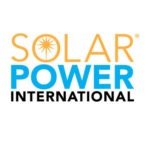Your Essential Zero-Export Guide for Craftstrom Solar Solutions. This blog post is also relevant for non-CraftStrom products, as long as they are zero-export.
We all want/need to be good citizens and comply with whatever new regulatory nightmares are flung in our direction, so here it goes. This is our attempt at explaining if and how the lengthy process of getting an interconnection agreement can be avoided.
1. Understanding Zero-Export and Why It Matters
- Definition of Zero-Export: Zero-export, or “staying behind the meter,” means that all power generated by the solar system is used within the home, without any excess energy feeding back into the public grid.
- Compliance Benefits: By avoiding grid backfeed, Craftstrom’s systems typically do not require interconnection agreements, because, by design, utilities’ jurisdictions end at the utility meter. This can help in streamlining installations and avoiding lengthy approval processes common with traditional grid-tied solar.
- Careful: Just because utilities don’t have jurisdiction, doesn’t mean they can’t complicate you life, as we’re sure you have probably experienced. Also, make sure your insurance is aware you have installed a solar system.
2. Zero-Export Benefits in Craftstrom Systems
- Plug-and-Play Installation: Craftstrom’s systems are designed for easy self-installation without special permits, reducing setup time and expense.
- Smart Monitoring with the PowerMeter: The PowerMeter continuously monitors household energy usage to optimize energy flows, keeping all generated energy within the home. PowerMeter and inverters are always communicating and the PowerMeter knows on which leg (phase) of your breaker box you’ve installed the solar panels. That way it can check exactly how much usage you have on that leg, versus how much you’re producing. It does this by talking with the solar and battery systems every tenth of a second, reacting in under a second.
3. State and Utility-Specific Insights
General U.S. Landscape:
- No Interconnection Required for Zero-Export: In most states, systems that stay behind the meter do not require formal interconnection. This is common in states like Texas, Florida, and other solar-friendly areas.
- Permit-Free Installations: Some states also allow systems under certain kilowatt thresholds (e.g., under 10kW) to operate permit-free, which is beneficial for Craftstrom’s typical system range (400W–4kW).
California:
- Interconnection for Non-Exporting Systems: Under California’s Rule 21, non-exporting systems (such as Craftstrom’s) generally qualify for a streamlined “notification-only” interconnection process, but they are still subject to utility review and standards to prevent inadvertent exports. California’s large investor-owned utilities, such as PG&E, also perform compliance audits on a selection of zero-export installations.
- Permit Requirements: Local jurisdictions may require permits, especially in cases where electrical work must be inspected. For clarity, customers should consult their utility or local codes in California.
Illinois:
- Strict Utility Compliance: Illinois requires non-exporting systems to utilize certified power control systems to manage and limit export capacity. Even if systems are designed to stay behind the meter, certain utilities may request interconnection documentation as a formality, particularly in areas with higher DER penetration.
- Permit Recommendations: To ensure compliance, Illinois residents should review requirements with their local Public Utility Commission or contact their utility for interconnection guidelines specific to non-export systems
Minnesota:
- Export-Limiting Technology Required: Minnesota’s interconnection rules allow for zero-export systems but require certified export-control technologies, such as reverse power protection, to ensure grid stability. Customers installing non-exporting systems may be asked to verify compliance with these controls when filing for interconnection in certain utility territories.
- Utility Consultation Advised: For added clarity, Minnesota customers may want to check with their utility to confirm if any local interconnection documentation is needed, particularly for systems nearing the 4kW range
For more insights, also read this blog from the NC Clean Energy Technology Center, or
4. Practical Steps for Craftstrom Customers: Ensuring Compliance
- Verify Local Guidelines: We recommend you visit their state’s Public Utility Commission (PUC) website or consult DSIRE (Database of State Incentives for Renewables & Efficiency) to confirm state-specific policies on zero-export.
- Utility-Specific Requirements: For customers in states where utilities have unique interconnection rules, contacting the utility directly can clarify if any additional requirements apply to zero-export systems, even for systems under 4kW.
- Craftstrom Support: Customers can reach out to Craftstrom’s support team for guidance on navigating utility discussions, as well as for tips on setting up zero-export systems effectively.
5. Additional Resources
- Database of State Incentives for Renewables & Efficiency (DSIRE): Customers can look up state-specific solar incentives and utility policies here.
- Public Utility Commission (PUC) Websites: Direct links to each state’s PUC offer local regulatory insights for interconnection and permit requirements.













